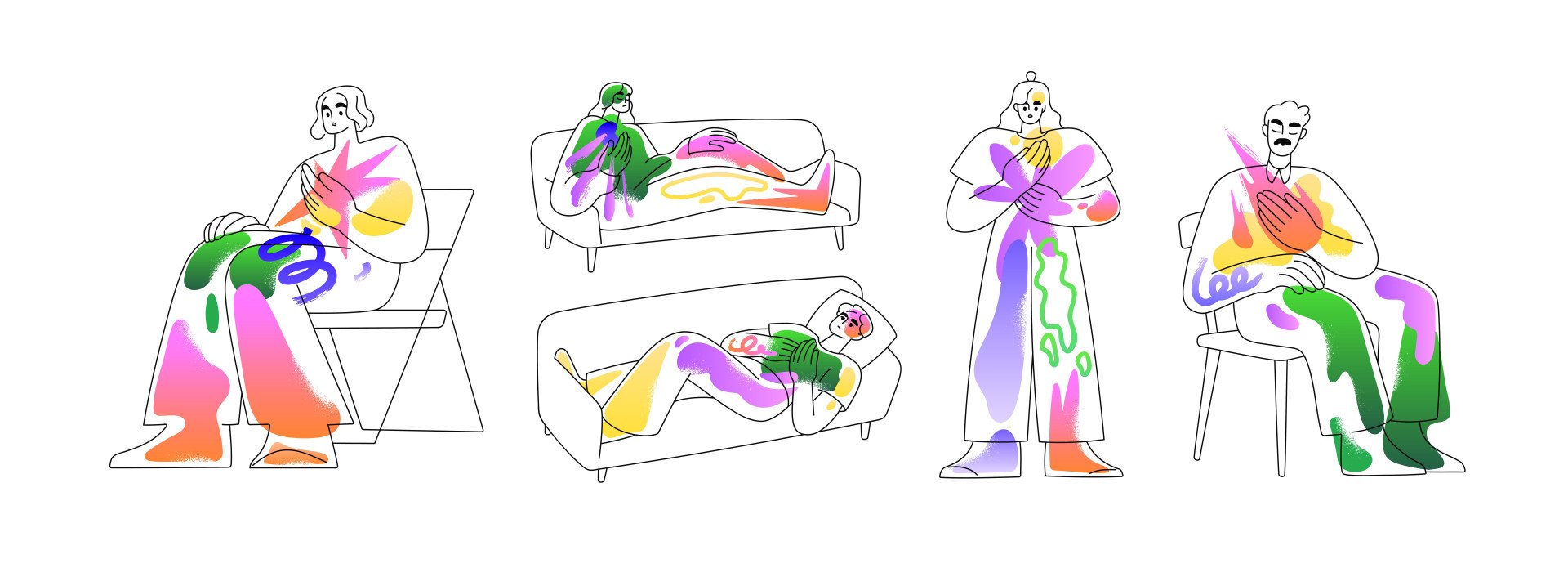You know that lump in your throat before tears fall, or the quickened heartbeat before speaking up in a meeting?
Our bodies often broadcast emotions before our minds translate them. Yet most of us rarely pause to listen.
A new study by researchers at the University of New Hampshire followed people through their everyday lives to explore this connection.
Using ecological momentary assessment the researchers asked 161 adults to record how strongly they felt 16 emotions and how aware they were of sensations in their body at that exact moment.
Over seven days, they captured nearly 7,500 emotional snapshots in real time.
What they discovered adds scientific weight to what mindfulness teachers and therapists have long suspected: the more intense the emotion, the louder the body speaks.

Key Points
- Stronger emotions = stronger body awareness: People noticed their heartbeat, breath, or muscle tension more when feelings were intense — good or bad.
- This link showed up in real life: It held true for 12 out of 16 emotions tracked during a week of smartphone check-ins.
- Energy level didn’t matter: The pattern appeared in both high-energy emotions (like excitement or fear) and low-energy ones (like sadness or calm).
- Body awareness can guide emotion regulation: Learning to notice physical sensations may help people understand and manage their feelings more effectively.
Tracking feelings in the wild
Unlike lab experiments that measure emotion in artificial settings, this study stepped into real life.
Participants, aged 18 to 31, received prompts on their smartphones up to eight times a day.
Each time, they rated how much they felt emotions such as happiness, sadness, stress, gratitude, or fear, and then rated their body awareness — how attuned they were to sensations like heartbeat, breathing, or muscle tension.
By analyzing thousands of these moments, the researchers found a clear pattern: when emotions felt stronger, people also noticed their body sensations more vividly.
This held true for both positive and negative emotions, and for both high-energy (excited, afraid) and low-energy (sad, content) states.
In other words, whether you’re elated after good news or quietly grieving a loss, your awareness of what’s happening inside your body tends to rise alongside emotional intensity.
The emotions that broke the pattern
Interestingly, not every emotion followed this rule. Awareness of body sensations didn’t reliably increase during anger, frustration, annoyance, or relaxation.
These emotions may draw more on thoughts about the outside world — like feeling blocked, irritated, or calm — than on internal bodily cues.
The researchers suggest that for such states, context and interpretation may matter more than raw bodily signals.
For example, anger often stems from perceiving unfairness or obstruction, which may depend less on heartbeat or breath and more on mental appraisal of the situation.
Body awareness vs. body accuracy
A key insight of the study is that being aware of your body isn’t the same as accurately detecting its signals.
Previous research on interoceptive accuracy — people’s objective ability to track heartbeats or other physiological changes — has shown inconsistent links with emotional intensity.
But this new study focused on subjective awareness — what researchers call interoceptive sensibility: how conscious you are of your body’s ongoing sensations.
The results suggest that emotional experience depends less on how precisely you can detect your heart rate, and more on how present you are with what your body feels like.
This distinction helps explain why practices such as yoga, breathwork, and body-scan meditation can improve emotional wellbeing even without changing physiological accuracy.
They train attention — not the heartbeat itself.
Why it matters
This moment-to-moment synchrony between emotion and body awareness offers valuable clues for mental health.
People with depression, anxiety, or trauma often feel disconnected from their bodies — either numbed to sensations or overwhelmed by them.
Understanding that emotional intensity naturally fluctuates with bodily awareness could help therapists teach clients to notice these changes with curiosity rather than fear.
Mindfulness and somatic therapies already work along these lines.
They invite people to “come home” to their bodies, using sensations as a compass rather than a threat alarm.
This study provides empirical evidence that such awareness is not just poetic — it’s scientifically observable in daily life.
Clinicians might use this insight to help clients differentiate between feeling a strong emotion and catastrophizing it. For instance, a racing heart during stress doesn’t always mean danger; it might simply reflect the body mirroring the mind’s emotional volume.
The bigger picture
Still, the researchers caution against over-generalizing. Their participants were mostly young,
White women — a group that may not reflect broader cultural or gender differences in body awareness.
Future studies could explore whether men, older adults, or diverse communities experience this link in similar ways.
They also note a subtle limitation: each survey asked about emotions before body awareness, meaning that the very act of reflecting on feelings might have drawn attention inward.
Even so, the pattern was consistent across thousands of reports, hinting at a genuine, dynamic relationship between body and emotion.
Feeling your way forward
Next time you catch yourself saying “I feel it in my gut” or “My heart’s racing with excitement,” you’re likely describing a real psychological link.
The body doesn’t merely echo emotion — it helps build it.
When you become aware of the sensations beneath your feelings, you’re tuning into the instrument that emotion plays upon.
That awareness, in turn, can become a tool for resilience: recognizing when stress rises, when joy peaks, and when calm settles back in.
As study author Jolie Wormwood and colleagues show, our bodies are not passive containers for emotions — they’re active participants in them.
Every sigh, flutter, or tension tells a story. The more we learn to listen, the better we can understand what our emotions are trying to say.
Reference
MacVittie, A., Petagna, K. D., & Wormwood, J. B. (2025). I can feel it in my bones: Experienced intensity of emotion predicts in-the-moment awareness of body sensations. Emotion, 25(6), 1531–1535. https://doi.org/10.1037/emo0001502


